ORNO OR-CR-283 Handleiding
ORNO
Bewegingsdetector
OR-CR-283
Bekijk gratis de handleiding van ORNO OR-CR-283 (4 pagina’s), behorend tot de categorie Bewegingsdetector. Deze gids werd als nuttig beoordeeld door 19 mensen en kreeg gemiddeld 5.0 sterren uit 10 reviews. Heb je een vraag over ORNO OR-CR-283 of wil je andere gebruikers van dit product iets vragen? Stel een vraag
Pagina 1/4

Podmiot odpowiedzialny/ Responsible entity/ Zuständige Stelle:
ORNO-LOGISTIC Sp. z o.o.
ul. Rolników 437, 44-141 Gliwice, POLAND
tel. (+48) 32 43 43 110, www.orno.pl
PL
EN
DE
|
|
|
Sufitowy czujnik ruchu i obecności PIR
Ceiling mounted PIR motion and presence sensor
Deckenmontierter PIR-Bewegungs- und Präsenzmelder
Model: - -283OR CR
PL| INFORMACJE DOTYCZĄCE BEZPIECZEŃSTWA: ostrzeżenia i uwagi dot. bezpiecznego stosowania produktu.
1. Przed rozpoczęciem korzystania z urządzenia, zapoznaj się z niniejszą instrukcją obsługi oraz zachowaj ją na przyszłość.
2. Dokonanie samodzielnych napraw i modyfikacji skutkuje utratą gwarancji.
3. ne. Urządzenie może być używane wyłącznie zgodnie z jego przeznaczeniem. Jakiekolwiek inne zastosowanie uznaje się za niebezpiecz
4. Producent nie odpowiada za uszkodzenia mogące wyniknąć z nieprawidłowego montażu czy eksploatacji urządzenia.
5. Montaż urządzenia powinien być wykonany przez osobę doświadczaną i posiadającą odpowiednie uprawnienia.
6. Wszelkie czynności wykonuj przy odłączonym zasilaniu.
7. Nie zanurzaj urządzenia w wodzie i innych płynach.
8. Nie obsługuj urządzenia, gdy uszkodzona jest obudowa.
9. Nie dotykaj bezpośrednio ani pośrednio wewnętrznych elementów pracującego urządzenia - grozi porażeniem i/lub oparzeniem.
10. Nie zakrywaj urządzenia. Zapewnij swobodny przepływ powietrza.
11. Produkt jest przeznaczony do użytku wewnątrz i na zewnątrz pomieszczeń.
12. Wybierając miejsce montażu oprawy z czujnikiem ruchu, należy wziąć pod uwagę następujące kryteria:
a) Miejsce montażu powinno uwzględniać kąty zasięgu czujnika, aby zapewnić skuteczne wykrywanie ruchu.
b) Czujnik nie powinien być skierowany na jasne obiekty (np. białe powierzchnie) ani na źródła ciepła, które mogą zakłócać jego działanie.
c) Unikaj montażu w pobliżu urządzeń emitujących silne pole elektromagnetyczne, grzejników oraz obiektów silnie odbijających światło, takich jak
lustra czy okna.
d) Nie instaluj oprawy w miejscach narażonych na silny wiatr, gdzie ruchome obiekty (np. drzewa, zasłony) mogą wywoływać fałszywe wykrycia.
Unikaj również miejsc w pobliżu sprzętów emitujących podmuchy wiatru (zamrażarki, klimatyzatory, wentylatory, itd.).
e) Zanieczyszczenie optyki czujnika zmniejsza zasięg i czułość detekcji ruchu – należy dbać o jej czystość.
f) W warunkach, gdzie różnica temperatur między poruszającym się obiektem a otoczeniem jest niewielka (np. w upalne dni), zasięg i szybkość
reakcji czujnika mogą być ograniczone.
WSKAZÓWKI DOTYCZĄCE SPOSOBU UTYLIZACJI
Każde gospodarstwo jest użytkownikiem sprzętu
elektrycznego i elektronicznego, a co za tym idzie
potencjalnym wytwórcą niebezpiecznego dla ludzi
i środowiska odpadu, z tytułu obecności w sprzęcie
niebezpiecznych substancji, mieszanin oraz części
składowych. Z drugiej strony zużyty sprzęt to cenny materiał,
z którego możemy odzyskać surowce takie jak miedź, cyna,
szkło, żelazo i inne. Symbol przekreślonego kosza na śmieci
umieszczany na sprzęcie, opakowaniu lub dokumentach do
niego dołączonych oznacza, że produktu nie wolno wyrzucać
łącznie z innymi odpadami. Oznakowanie oznacza jedno-
cześnie, że sprzęt został wprowadzony do obrotu po dniu 13
sierpnia 2005 r. Obowiązkiem użytkownika jest przekazanie
zużytego sprzętu do wyznaczonego punktu zbiórki w celu
właściwego jego przetworzenia. Informacje o dostępnym
systemie zbierania zużytego sprzętu elektrycznego można
znaleźć w punkcie informacyjnym sklepu oraz w urzędzie
miasta/gminy. Odpowiednie postępowanie ze zużytym
sprzętem zapobiega negatywnym konsekwencjom dla
środowiska naturalnego i ludzkiego zdrowia!
EN| DIRECTIONS FOR SAFTY USE: warnings and precautions for the safe use of the product.
1. Before using the device, read this user manual carefully and keep it for future reference.
2. Self-repairs or modifications will void the warranty.
3. The device may only be used as intended. Any other use is considered unsafe.
4. The manufacturer is not liable for damages resulting from improper installation or use of the device.
5. Installation must be performed by a qualified professional authorized to install electrical equipment.
6. Perform all tasks with the power supply disconnected.
7. Do not immerse the device in water or other liquids.
8. Do not operate the device if the housing is damaged.
9. Do not touch internal components of the operating device directly or indirectly — risk of electric shock and/or burns.
10. Do not cover the device. Ensure free airflow.
11. The product is intended for indoor and outdoor use.
12. When selecting a location for a fixture with a motion sensor, consider the following criteria:
a) The installation location should account for the sensor's detection angles to ensure effective motion detection.
b) The sensor should not be directed towards bright objects (e.g., white surfaces) or heat sources that could interfere with its operation.
c) Avoid installing the sensor near devices that emit strong electromagnetic fields, heaters, or objects that strongly reflect light, such as mirrors or
windows.
d) Do not install the fixture in areas exposed to strong winds, where moving objects (e.g., trees, curtains) could trigger false detections. Additionally,
avoid locations near appliances that emit drafts of air (freezers, air conditioners, fans, etc.).
e) Dirt on the sensor's optics reduces the detection range and sensitivity – ensure it stays clean.
f) In conditions where the temperature difference between the moving object and the surroundings is minimal (e.g., on hot days), the sensor's
range and reaction speed may be limited.
DISPOSAL INSTRUCTIONS
Every household is a user of electrical and electronic
equipment and therefore a potential producer of
hazardous waste to humans and the environment
from the presence of hazardous substances,
mixtures and components in the equipment. On the
other hand, waste equipment is a valuable material, from
which we can recover raw materials such as copper, tin, glass,
iron and others. The WEEE sign placed on the equipment,
packaging or documents attached thereto indicates the
necessity of separate collection of waste electrical and
electronic equipment. Products marked in this way, under
penalty of a fine, may not be disposed of in ordinary waste
together with other waste. The marking also means that the
equipment was placed on the market after the 13th August
2005. It is the user’s responsibility to hand over the waste
equipment to a designated collection point for proper
treatment. Used equipment may also be returned to the
seller in case of purchase of a new product in a quantity not
greater than the new purchased equipment of the same type.
Information about the available waste electrical equipment
collection system can be found at the information point of the
shop and in the municipal office. Proper handling of waste
equipment prevents negative consequences for the
environment and human health!
DE| ANWEISUNGEN ZUR SICHEREN VERWENDUNG: Warnhinweise und Vorsichtsmaßnahmen für die sichere Verwendung des Produkts.
1. Vor der Inbetriebnahme des Geräts ist die Bedienungsanleitung sorgfältig zu lesen und für die Zukunft aufzubewahren.
2. Eigenständige Reparaturen und Modifikationen führen zum Verlust der Garantie.
3. Das Gerät darf ausschließlich bestimmungsgemäß verwendet werden. Jegliche andere Verwendung gilt als gefährlich.
4. Der Hersteller haftet nicht für Schäden, die durch unsachgemäße Montage oder Nutzung des Geräts entstehen können.
5. Die Montage des Geräts sollte von einer Person mit Berechtigung zur Installation elektrischer Geräte durchgeführt werden.
6. Alle Arbeiten sind bei ausgeschaltetem Strom auszuführen.
7. Tauchen Sie das Gerät nicht in Wasser oder andere Flüssigkeiten.
8. Betreiben Sie das Gerät nicht, wenn das Gehäuse beschädigt ist.
9. Berühren Sie keine inneren Komponenten des laufenden Geräts – weder direkt noch indirekt – da dies zu Stromschlägen und/oder
Verbrennungen führen kann.
10. Decken Sie das Gerät nicht ab. Sorgen Sie für eine freie Luftzirkulation.
11. Das Produkt ist für die Verwendung im Innen- und Außenbereich bestimmt.
12. Bei der Wahl des Installationsortes für eine Leuchte mit Bewegungsmelder sollten folgende Kriterien beachtet werden:
a) Bei der Wahl des Montageortes sollte der Abdeckungswinkel des Sensors berücksichtigt werden, um eine effektive Bewegungserkennung zu
gewährleisten.
b) Der Sensor sollte nicht auf helle Objekte (z. B. weiße Flächen) oder Wärmequellen gerichtet werden, die seine Funktion beeinträchtigen könnten.
c) Vermeiden Sie die Montage in der Nähe von Geräten, die starke elektromagnetische Felder aussenden, Heizungen und stark reflektierenden
Objekten wie Spiegeln oder Fenstern.
d) Installieren Sie die Leuchte nicht in Bereichen, die starkem Wind ausgesetzt sind und in denen sich bewegende Objekte (z. B. Bäume,
Vorhänge) zu Fehldetektionen führen können. Vermeiden Sie auch Standorte in der Nähe von Geräten, die Windböen erzeugen (Gefriertruhen,
Klimaanlagen, Ventilatoren usw.).
e) Verschmutzung der Sensoroptik verringert die Reichweite und Empfindlichkeit der Bewegungserkennung - halten Sie sie sauber.
f) Unter Bedingungen, bei denen der Temperaturunterschied zwischen dem sich bewegenden Objekt und der Umgebung gering ist (z. B. bei heißem
Wetter), können die Reichweite und die Reaktionsgeschwindigkeit des Sensors eingeschränkt sein.
ENTSORGUNGSHINWEISE
Jeder Haushalt ist ein Benutzer von Elektro- und
Elektronikgeräten und daher ein potenzieller Produzent
von gefährlichen Abfällen für Mensch und Umwelt,
da die Geräte gefährliche Stoffe, Gemische und
Komponenten enthalten. Andererseits sind gebrauchte
Geräte ein wertvolles Material, aus dem wir Rohstoffe wie
Kupfer, Zinn, Glas, Eisen u.a. gewinnen können. Das Symbol
des durchgestrichenen Mülleimers auf Geräten, Verpackungen
oder den angehängten Dokumenten deutet auf die Notwendig-
keit der getrennten Sammlung von Elektro- und Elektronik-
Altgeräten hin. So gekennzeichnete Produkte dürfen unter
Androhung einer Geldstrafe nicht mit dem Hausmüll entsorgt
werden. Diese Kennzeichnung bedeutet gleichzeitig, dass
das Gerät nach dem 13. August 2005 in Verkehr gebracht
wurde. Der Benutzer soll die Altgeräte einer festgelegten
Sammelstelle zur entsprechenden Entsorgung zuführen.
Gebrauchtgeräte können auch an den Verkäufer übergeben
werden, wenn Sie ein neues Produkt in einer Menge kaufen,
die nicht höher ist als die der neu gekauften Ausrüstung
desselben Typs. Informationen zum verfügbaren Sammelsystem
für Elektroaltgeräte finden Sie am Informationspunkt des
Geschäfts und im Stadt-/Gemeindeamt. Der sachgemäße
Umgang mit gebrauchten Geräten verhindert negative
Folgen für die Umwelt und die menschliche Gesundheit!
03/2025
ZASTOSOWANE OZNACZENIA/ APPLIED MARKINGS/ VERWENDETE BEZEICHNUNGEN
1.
2.
3.
4.
5.
6.
7.
1. Wyrób zgodny z CE.
2. Utylizacja zużytego sprzętu elektrycznego.
3. Producent.
4. Dodatkowa dokumentacja i/lub instrukcja obsługi.
5. Druga klasa ochrony.
6. Do użytku wewnątrz pomieszczeń.
7. Zachowaj czystość.
1. Product compliant with CE standard.
2. Disposal of used electrical equipment.
3. Manufacturer.
4. Additional documentation and/or user manual.
5. Protection class II.
6. Suitable for indoor use.
7. Keep tidy.
1. Produkt konform mit CE.
2. Entsorgung von Elektroaltgeräten.
3. Hersteller.
4. Zusätzliche Dokumentation und/oder Betriebsanleitung.
5. Schutzklasse II.
6. Geeignet für den Innenbereich.
7. Halten Sie Ordnung.

2
SKRÓCONA INSTRUKCJA OBSŁUGI/ QUICK GUIDE/ KURZANLEITUNG
A - Napięcie wyjściowe/ Output
voltage/ Ausgangsspannung
N - Zacisk neutralny/ Neutral
terminal/ Neutrale Klemme
L - Napięcie wejściowe/ Input
voltage/ Eingangsspannung
- Obciążenie/ Load/ Belastung
rys. 1/ fig. 1/ Abb. 1
rys. 2/ fig. 2/ Abb. 2
rys.3/ fig.3/ Abb.3
rys.4/ fig.4/ Abb.4
rys.5/ fig.5/ Abb.5
rys.6/ fig.6/ Abb.6
rys.7/ fig.7/ Abb.7
SPECYFIKACJA TECHNICZNA/ TECHNICAL DATA/ TECHNISCHE DATEN
Zasilanie
Power supply
Stromversorgung
230V~, 50Hz
Maks. obciążenie
Max. load
Max. Belastung
800W 200WLED
Pobór prądu
Power consumption
Stromaufnahme
ok. 0,5W
Kąt detekcji czujnika
Detection angle
Erfassungswinkel
360°
Regulacja czujnika natężenia światła
Adjustable daylight sensor
Einstellbarer Tageslichtsensor
<3-2000 lux
Regulacja czasu świecenia
Adjustable time setting
Einstellbare Leuchtdauer
min. 10s ± 3s
max. 15min ± 2min
Zasięg detekcji czujnika
Detection range
Erfassungsbereich
≤ 6m⌀
Stopień ochrony
Protection level
Schutzart
IP20
Waga netto
Net weight
Nettogewicht
0,052kg
Temp. pracy
Working temperature
Betriebstemperatur
-20°C – +40°C
Wysokość montażu
Installation height
Montagehöhe
2,2m – 4m
Wymiary otworu montażowego
Dimensions of the mounting hole
Abmessungen der Montageöffnung
⌀42 x 55mm
Współpracuje z LED
Works with LED
Arbeitet mit LED
✔
Czujnik obecności
Presence sensor
Anwesenheitssensor
✔
Przekaźnik
Relay
Relais
✔
PL
PRZEZNACZENIE
Czujnik ruchu przystosowany do montażu w sufitach podwieszanych służy do automatycznego sterowania oświetleniem lub innymi urządzeniami elektrycznymi po
wykryciu ruchu. Odbiornik (oświetlenie) jest włączane za pomocą czujnika ruchu PIR, który działa na podczerwień. Pozwala on na włączenie oświetlenia pod wpływem
ruchu obiektu wydzielającego ciepło w obrębie pola widzenia czujnika i pozostaje włączone tak długo jak długo czujnik ruchu wykrywa ruch w obrębie pola widzenia.
Jeśli w ustawionym czasie nie zostanie wykryty ruch oświetlenie lub inne podłączone urządzenie elektryczne zostanie automatycznie wyłączone.
SPOSÓB INSTALACJI
1. Wyłącz zasilanie.
2. Sprawdź odpowiednim przyrządem stan beznapięciowy na przewodach zasilających.
3. Zdejmij przezroczystą pokrywę winylową.
4. Poluzuj śruby w kostce zaciskowej, a następnie podłącz zasilanie i wszystkie przewody elektryczne zgodnie ze schematem podłączenia przewodów (rys.2).
5. Odegnij metalową sprężynę czujnika do góry, aż znajdzie się w położeniu “I” z czujnikiem, następnie włóż czujnik do otworu w suficie lub do puszki instalacyjnej
o takim samym rozmiarze jak czujnik. Po zwolnieniu sprężyny, czujnik zostanie zamontowany.
6. Włącz zasilanie.
7. Dopasuj parametry i przetestuj czujnik.
TEST
LUX - regulacja czujnika natężenia światła
Ustawienie to określa przy jakim natężeniu światła urządzenie przestaje wykrywać ruch, pozostając w trybie oczekiwania. Zabezpiecza to przed niepożądanym
włączaniem oświetlenia podczas dnia. Porę świecenia ustawia się pokrętłem “LUX”, które należy przekręcić do oporu zgodnie z ruchem wskazówek zegara i poczekać
do zmierzchu. Gdy zacznie się ściemniać należy ustawić porę świecenia przekręcając pokrętło “LUX” do momentu włączenia się światła.

3
TIME - regulacja czasu świecenia
Pokrętło umożliwia określenie czasu przez jaki urządzenie będzie działało po aktywacji czujnika. Czas świecenia liczy się od momentu wykrycia ruchu do momentu
wyłączenia. Pokrętło TIME przekręć w kierunku przeciwnym z ruchem wskazówek na minimum, a LUX w kierunku zgodnym z ruchem wskazówek zegara na maksimum.
Włącz zasilanie i odczekaj około 5-30 sekund aby czujnik ustawił się do otoczenia (podczas ustawiania się czujnika, oświetlenie może się włączać i wyłączać
niespodziewanie, co należy zignorować). Czujnik zacznie działać ponownie po 5-10 sek. od zakończenia pierwszego sygnału. W przypadku braku wykrycia ruchu przez
czujnik w ciągu 7-13 sek. oświetlenie zgaśnie. Przekręć pokrętło LUX w kierunku odwrotnym do ruchu wskazówek zegara z pozycji MAX na pozycję MIN.
Uwaga: podczas testowania urządzenia w świetle dziennym, pokrętło LUX należy obrócić na pozycję (SUN), w przeciwnym wypadku czujnik nie będzie działać
prawidłowo! Jeżeli moc podłączonego do czujnika oświetlenia jest wyższa niż 60W odległość między czujnikiem, a oświetleniem powinna wynosić przynajmniej 60 cm.
NIEKTÓRE PROBLEMY I SPOSOBY ICH ROZWIĄZANIA
Obciążenie nie działa:
a. Sprawdź podłączenie zasilania i odbiornika.
b. Sprawdź odbiornik.
c. Sprawdź ustawienia czujnika i ustawienia natężenia oświetlenia otoczenia.
Słaba czułość:
a. Sprawdź, czy przed czujnikiem nie znajdują się urządzenia, które mogą zakłócić odbierane sygnały.
b. Sprawdź, czy wykrywany obiekt znajduje się w polu detekcji.
c. Sprawdź wysokość instalacji.
Czujnik nie może automatycznie wyłączyć obciążenia:
a. Sprawdź, czy w polu detekcji występują ciągłe sygnały ruchu.
b. Sprawdź, czy opóźnienie czasowe nie jest ustawione na najdłuższą wartość.
c. Sprawdź, czy zasilanie jest zgodne z instrukcją.
DANE DOTYCZĄCE CZYSZCZENIA I KONSERWACJI
Konserwację wykonywać należy przy odłączonym zasilaniu. Czyścić wyłącznie delikatnymi i suchymi tkaninami. Nie używać chemicznych środków czyszczących.
SERWIS POSPRZEDAŻOWY
Jeśli pomimo staranności, z jaką zaprojektowaliśmy i wyprodukowaliśmy Twój produkt nie działa on prawidłowo, skontaktuj się z naszymi technikami z zespołu obsługi
posprzedażnej:
Doradca klienta detalicznego
Tel.: +48 (32) 43 43 110 wew. 109
e-mail: techniczny@orno.pl
Od poniedziałku do piątku w godzinach od 8:00 do 17:00.
KANAŁY KOMUNIKACJI ZWIĄZANE Z BEZPIECZEŃSTWEM
Wszelkie skargi i informacje związane z bezpieczeństwem wyrobu należy zgłaszać do producenta za pomocą strony internetowej: www.orno.pl.
DODATKOWE INFORMACJE
Z uwagi na fakt, że dane techniczne podlegają ciągłym modyfikacjom, Producent zastrzega sobie prawo do dokonywania zmian dotyczących charakterystyki wyrobu
oraz wprowadzania innych rozwiązań konstrukcyjnych niepogarszających parametrów i walorów użytkowych produktu. Dodatkowe informacje na temat produktów marki
ORNO dostępne są na: www.orno.pl. Orno-Logistic Sp. z o.o. nie ponosi odpowiedzialności za skutki wynikające z nieprzestrzegania zaleceń niniejszej instrukcji. Firma
Orno-Logistic Sp. z o.o. zastrzega sobie prawo do wprowadzania zmian w instrukcji - aktualna wersja do pobrania ze strony www.orno.pl. Wszelkie prawa do tłumaczenia/
interpretowania oraz prawa autorskie niniejszej instrukcji są zastrzeżone.
EN
CHARACTERISTICS
The sensor is suitable for installation in suspended ceilings. It is used to automatically control lighting or other electrical devices when motion is detected. The receiver
(lighting) is switched on by means of a PIR motion sensor, which operates on infrared. It allows the lighting to be switched on when an object that emits heat within the
sensor's field of view moves and remains switched on as long as the motion sensor detects movement within the field of view. If no movement is detected within the set
time, the lighting or other connected electrical equipment is automatically switched off.
INSTALLATION
1. Disconnect the power supply.
2. Check if there is no voltage on the power leads with a suitable instrument.
3. Remove the transparent vinyl cover.
4. Loosen the screws in the terminal block and then connect the power supply and all electrical wires according to the wiring diagram (fig.2).
5. Bend the sensor's metal spring upwards until it is in position "I" with the sensor, then insert the sensor into a hole in the ceiling or into an installation box of the same
size as the sensor. When the spring is released, the sensor will be installed.
6. Turn on the power.
7. Adjust the sensor parameters and test the device.
TEST
LUX – daylight sensor adjustment
This setting specifies the luminous intensity at which the device stops motion detection while remaining in the stand-by mode. This secures against undesirable lighting
switching on by day. The light season is set with the "LUX" knob, which must be turned clockwise to the stop and waited until dusk. If the light starts to darken, set the
light time by turning the "LUX" knob until the light turns on.
TIME - lighting time adjustment
The knob allows you to determine the time for which the device will operate when the sensor is activated. The light time is counted from the moment of the motion is
detected to the moment it is switched off. Turn the TIME knob counterclockwise to minimum and the LUX knob clockwise to maximum. Turn on the power and wait about
5-30 seconds for the sensor to adjust to the environment (while the sensor is adjusting, the lighting may turn on and off unexpectedly, which should be ignored).
The sensor will start operating again after 5-10 seconds from the end of the first signal. If the sensor does not detect movement within 7-13 seconds, the lighting will go
out. Turn the LUX knob counterclockwise from MAX to MIN.
Note: When testing the device in daylight, turn the LUX knob to the position (SUN), otherwise the sensor will not function properly! If the power of the light sensor is
higher than 60W, the distance between the sensor and the lighting should be at least 60 cm.
TROUBLESHOOTING
Load does not work:
a. Check the power and receiver connections.
b. Check the receiver.
c. Check the sensor and twilight sensor settings.
Poor sensitivity:
a. Check if there are any devices in front of the sensor that might interfere with the signals.
b. Ensure the detected object is within the detection field.
c. Check the installation height.
Sensor cannot automatically turn off the load:
a. Check if there are continuous motion signals in the detection field.
b. Check if the time delay is set to the maximum value.
c. Ensure the power supply complies with the instructions.
CLEANING AND MAINTENANCE
Maintenance should be performed with the power off. Clean only with soft, dry cloths. Do not use chemical cleaning agents.
Product specificaties
| Merk: | ORNO |
| Categorie: | Bewegingsdetector |
| Model: | OR-CR-283 |
Heb je hulp nodig?
Als je hulp nodig hebt met ORNO OR-CR-283 stel dan hieronder een vraag en andere gebruikers zullen je antwoorden
Handleiding Bewegingsdetector ORNO
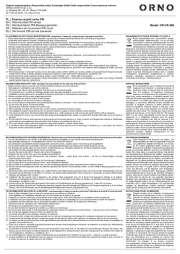
11 Augustus 2025
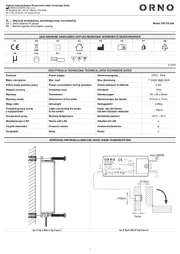
11 Augustus 2025
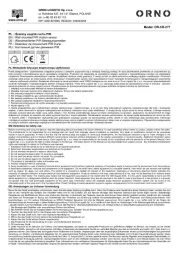
11 Juni 2025
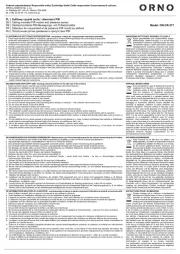
11 Juni 2025
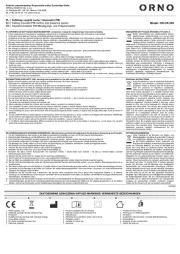
10 Juni 2025

10 Juni 2025
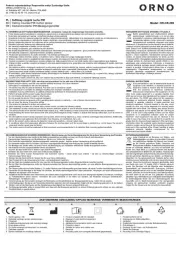
10 Juni 2025
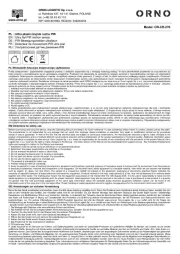
10 Juni 2025
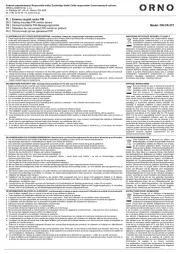
10 Juni 2025

9 September 2024
Handleiding Bewegingsdetector
- Intertechno
- Hikvision
- Smartwares
- ACME
- Bitron
- Iget
- GEV
- XQ-Lite
- Megatron
- Interlogix
- InLine
- Legrand
- Eaton
- Konig
- Gira
Nieuwste handleidingen voor Bewegingsdetector
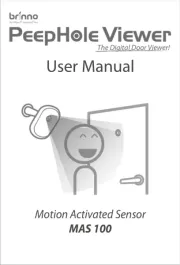
9 September 2025
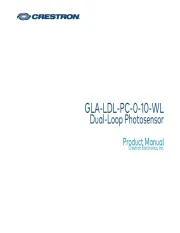
8 September 2025
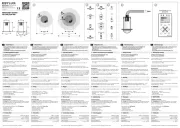
6 Juli 2025
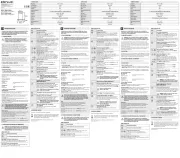
6 Juli 2025
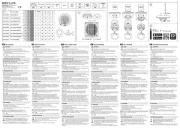
5 Juli 2025

5 Juli 2025
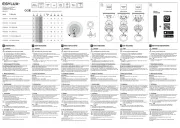
5 Juli 2025
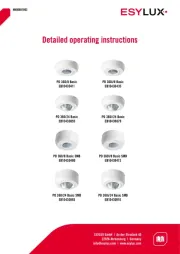
5 Juli 2025
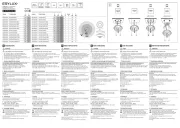
5 Juli 2025
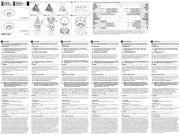
5 Juli 2025